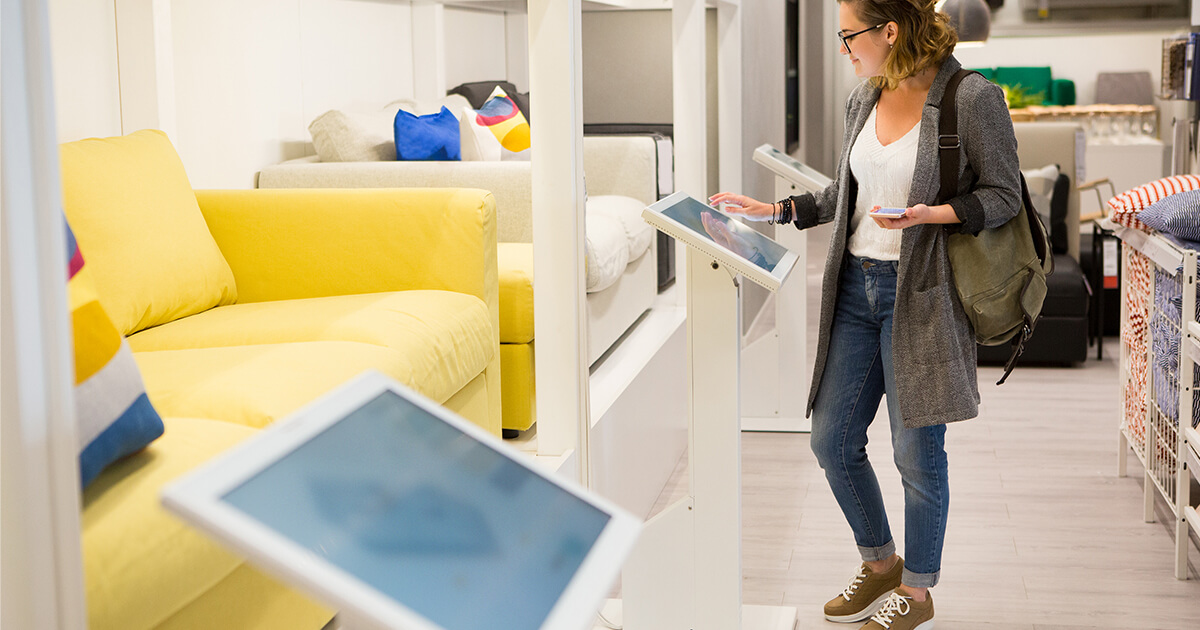
Retail boardrooms are big believers in the power of technology to transform the store experience. In fact, the most successful retailers have decoupled IT budgets from last year’s revenues and are investing in “transformational IT” spending up to seven times faster than their weakest competitors, according to IHL.
But in all the excitement over what that new technology will do when it hits the stores, too many retailers ignore the process of how they’ll get there. Minimizing the details of store technology deployment ends up costing them in time, money and the quick payoff those techs could be delivering. The same is true of tech refreshes, remodels, new stores, and so on ― lots of focus on the tech, too little on the rollout plan.
Here are five signs you may be minimizing technology rollout planning at your peril:
1. You’re Planning to Drop Ship All the Separate Components of the Solution to the Store
A tech solution isn’t just devices. It’s also screws, brackets, cables, software, configuration and so on. Drop shipping all of that to the store assumes that all parts will be correct and all will arrive at just the right time, nothing lost, misplaced or mis-shipped. It also means paying a technician to pull it all together correctly, download the image over the store network and solve any problems that emerge ― over and over, at each store. That bogs down the network, incurs more costly on-site hours and sometimes means return visits.
The better approach: By staging all equipment including images and configuration centrally, solutions arrive complete and ready to plug and play, minimizing in-store tech time and revisits.
2. You Committed to a Schedule Before Figuring Out What a Real Install Requires
Retailers often set technology rollout schedules starting with their top stores, or a particular district, before they’ve even determined what each rollout entails. That leaves them scrambling when each install actually takes longer than they thought, or some parts get delayed. It also means a lot of different techs working quickly without a solid, step-by-step plan, so the solutions get deployed in different ways and help desks get slammed with questions.
The better approach: Architecting and documenting a solid implementation process, and then sending the same tech to do store after store in a region, means he or she gets faster and better with each one, smoothing rollout and minimizing costs. Good scheduling is built on the install as well as the marketplace, for example, providing stores with scheduling windows instead of set times to accommodate unexpected issues. Good planning and training also takes pressure off support desks.
3. Your Proof of Concept/Pilot was in One, Highly Controlled Environment
Sure, your engineer can make the solution work in these conditions, but when that same project hits real world stores, all kinds of unexpected issues emerge, from network dead spots to unexpected integration hurdles.
The better approach: Following proof of concept with pilots helps work out the kinks and create a solid rollout plan that accommodates real-world conditions.
4. You Believe Your Size Means Standard Lead Times Don’t Apply
Lead times for retail tech devices can extend to weeks or even months. But tech companies are like your merchandise vendors ― they can’t deliver product they haven’t made yet.
The better approach: Base your rollout on realistic lead times. And don’t forget lead times for brackets, screws, cables and other incidentals that can derail a whole project if they’re not available.
5. You Called an Integrator Right Before Rollout was Set to Start
Often retailers don’t think about the technology rollout process until just before it begins. By that time, schedules are often set, but without the benefit of pilot-honed processes, efficient logistics and streamlined scheduling. So the integrator scrambles to make an untenable plan work and problems quickly mount, causing delays, internal headaches and higher costs.
The better approach: Seasoned, skilled integrators like Level 10 manage dozens of rollouts a month compared to a handful per year for most retailers. By reaching out to an integrator when you begin to vet the solution, such as testing the software ― or ideally, even earlier ― retailers access the best practices, processes and methodologies that ensure a faster, cheaper, smoother and lower-risk deployment. The small additional cost is almost always paid over many times in better results; a good integrator can assign a value to those savings before they even start a project.
Vetting an Integrator
To make sure you’re getting an integrator that can truly streamline deployments, ask probing questions about their process: Do they guarantee true plug-and-play capability? What is their recommendation for your rollout? Tell us about a time your approach impacted a deployment. Show us a deployment plan you have used. Tell us about how you like to schedule technicians to match the needs of the retailer and deliver the most efficient deployment. What are your recommendations to minimize or eliminate hardware supply chain issues?
Retailers are investing in store technology because it supports critical business goals. So it makes sense to give those investments the best chance to quickly begin delivering on that investment. By planning for last-mile deployment before the last minute and working with a high-quality integrator like Level 10, retailers can lower risk, contain costs and move quickly to real benefits.
Contact us today to learn how we can fully manage your next technology deployment to help you reduce cost and risk.
